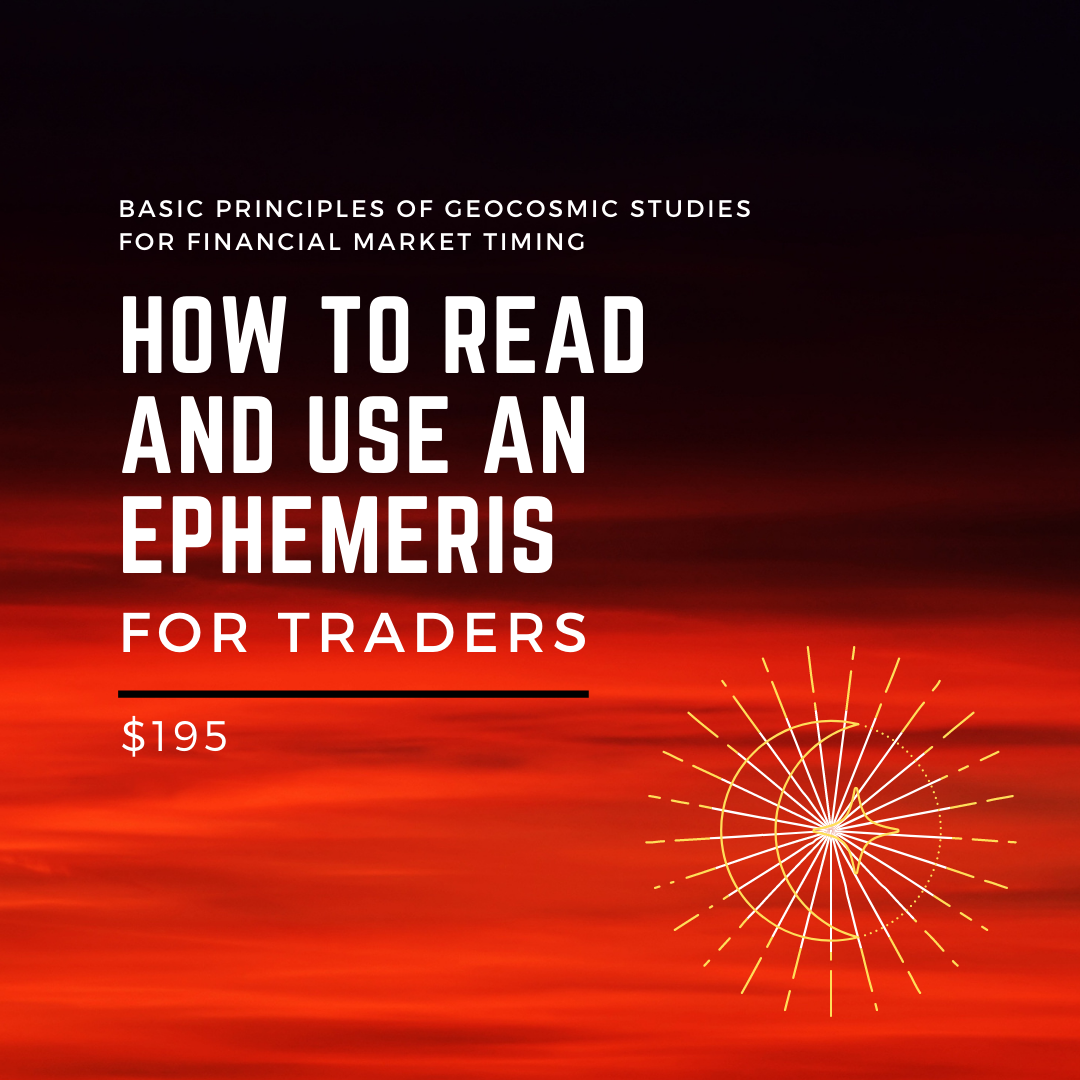
Basic Principles of Geocosmic Studies for Financial Market Timing: How to Read and Use an Ephemeris for Traders
$195.00
This course was first recorded in 2012 as part of MMTA. In this course you will learn the terminology and basic principles of Geocosmic Studies used to identify turning points in financial markets, as developed by Raymond A. Merriman.
This course includes:
8 Videos Recordings
PDF Slides used alongside with Videos
Course Guide
Workbook
Full Description
This course was first recorded in 2012 as part of MMTA. In this course you will learn the terminology and basic principles of Geocosmic Studies used to identify turning points in financial markets, as developed by Raymond A. Merriman. Specifically, you will learn how to:
- Read an ephemeris
- Calculate aspects
- Identify dates of planetary ingresses
- Identify dates of retrograde and direct planetary motions
- Identify new and full moons
- Identify planetary combinations of sun and moon signs
- Read an Aspectarian
- Calculate critical reversal dates
All of these tasks are necessary in order to apply the subject of geocosmic studies to the art of financial market timing.
This course includes:
8 Videos Recordings
PDF Slides used alongside with Videos
Course Guide
Workbook
As the title implies, we have one primary purpose with the course: to learn how to read an ephemeris.
What we will cover this course vs what we will not cover:
- We will not go into great detail about astronomy and how the universe operates. We will briefly discuss the universe and solar system so that you can visually see and intellectually grasp the basis for the position of the planets as shown in any ephemeris.
- We will not go deeply into many of the principles that are practiced in astrology either, like houses, which are based upon the rotation of the Earth and determined by the time of day in which one is born or an event takes place.
- Geocosmic studies: the position of planets as seen from the Earth, and in some cases, the Sun. We will introduce you to the concept of aspects, which pertains to specific mathematical and spatial distances between planets.
- We are examining the relationship of the planets to the signs of the zodiac, that circular band of constellation that envelopes the movement of planets in our solar system.
- When planets move from one sign to another – known as an “ingress” – and when planets form certain mathematical relationships in space to one another, as seen from earth, known as an “aspect.”
- Retrograde and direct dates of planets.
- Where are the planets, as seen from Earth (and also as seen from the Sun), in relation to the signs of the zodiac.
- When do these planets ingress into a new sign – both geocentric and heliocentric.
- When do these planets form a major aspect to one another and how does that play into a critical reversal date for all financial markets.
- When do planets go retrograde and then back to direct.